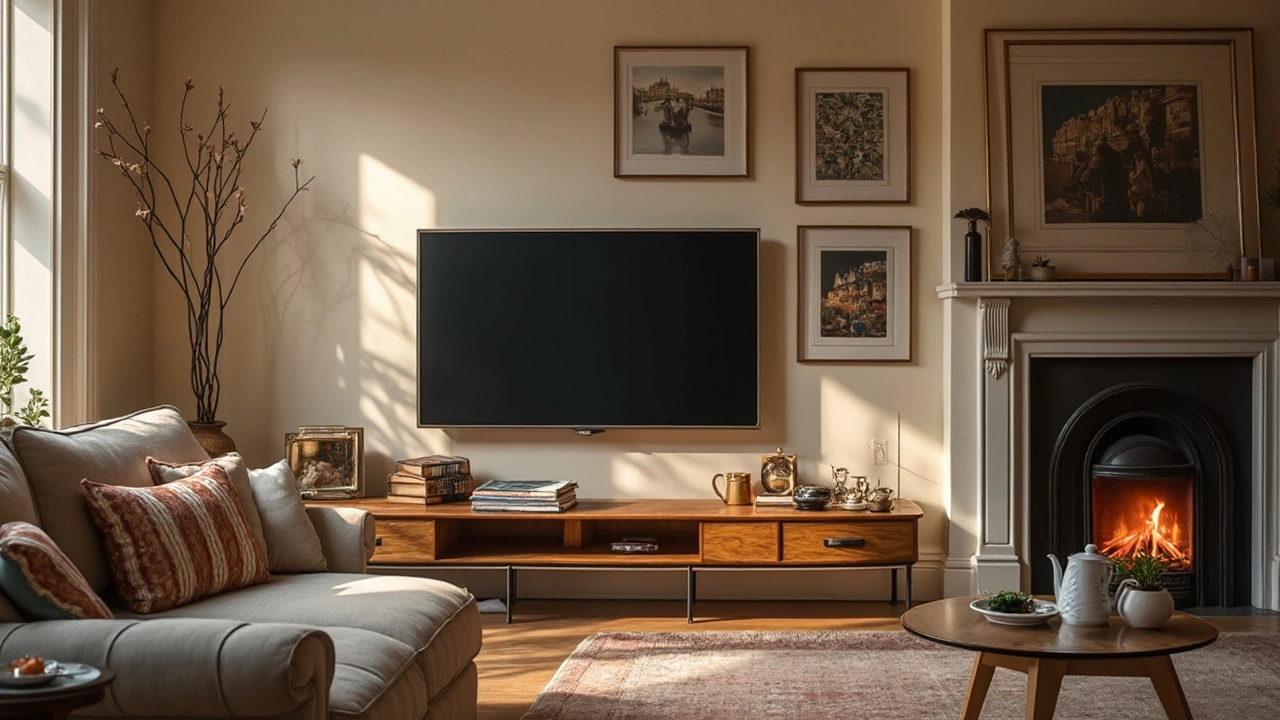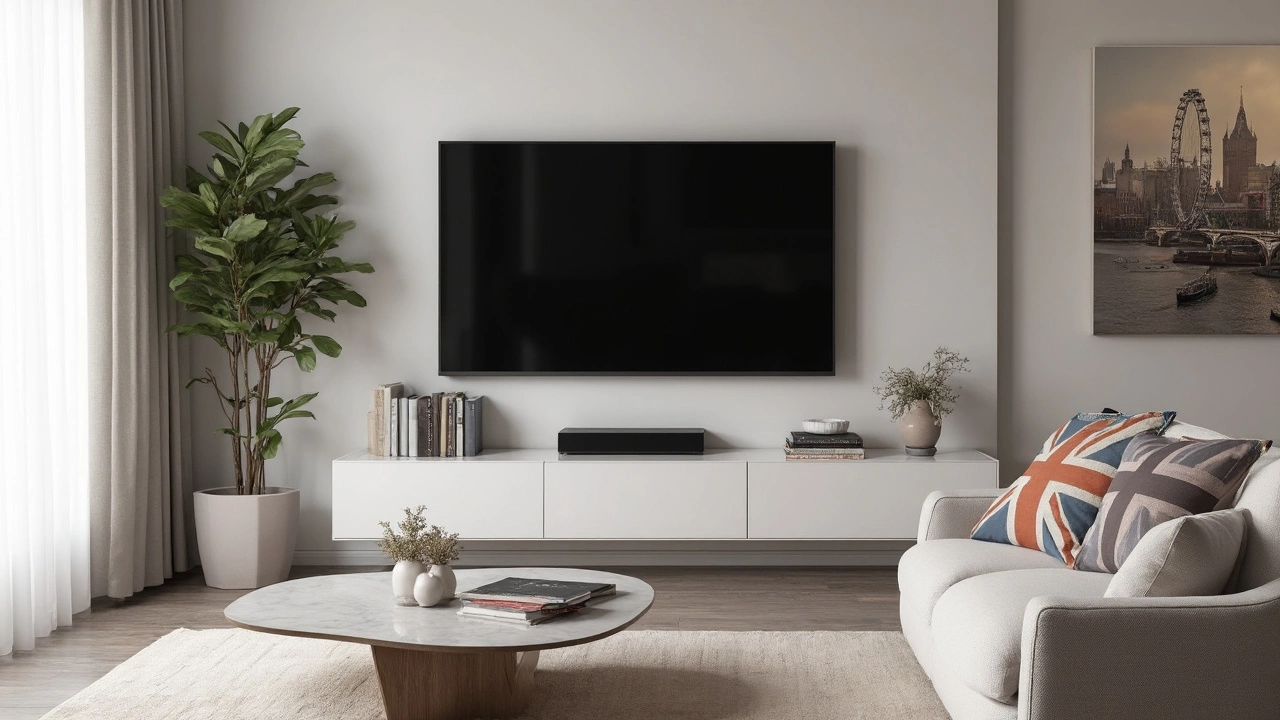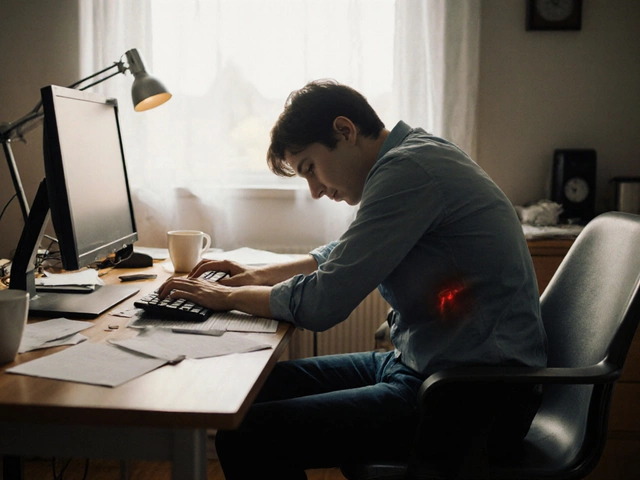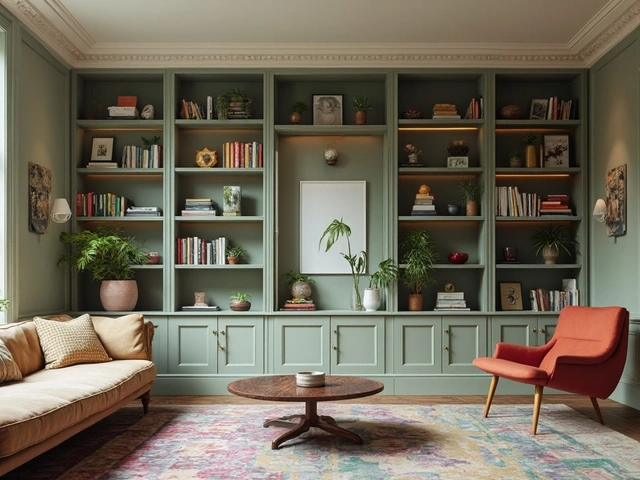 1
Apr,2025
1
Apr,2025
So you're stuck debating whether to put your TV on a stand or hang it on the wall. It's a decision that can seem trivial, but it really shapes your living space. Both options have their perks, and it all comes down to what fits your lifestyle and taste.
If you mount your TV on the wall, you free up floor space, which can make a room feel bigger. It's like turning your living space into a sleek movie theater. Plus, it's a safer bet if you're worried about curious kids or nosy pets, like my cat Tigger, tipping things over.
But then there's the stand—a classic choice that gives your TV a home, alongside all your gaming consoles and tech stuff. It's easier to set up and move around, perfect if you like to switch things up. Plus, some stands come with built-in storage, which is a win if you're short on space or just have too many gadgets.
- The Case for Wall Mounting
- Benefits of Using a TV Stand
- Considerations for Your Space
- Tips for Optimal TV Setup
The Case for Wall Mounting
Wall mounting your TV isn't just about freeing up floor space; it's about optimizing your viewing experience and giving your room a modern vibe. When you wall mount your TV, you can choose the optimal height for watching, reducing neck strain. It’s especially handy if you’ve got limited space or a busy household where floor space is at a premium.
Installing a TV wall mount means you can avoid clutter. Say goodbye to that mess of cords and equipment lying around. When the TV's up on the wall, it becomes a centerpiece, not to mention how it enhances your room’s visual appeal. And for those clean-freaks out there, cleaning around the TV is a breeze when it’s up and out of the way.
Speaking of safety, mounting helps protect your TV from accidental bumps or knocks, which is something we all worry about, especially if you’ve got kids or pets running around. Tigger, my cat, is notorious for knocking things over, so having this peace of mind is everything.
Another cool thing? Wall mounts often come with options for tilting or swiveling, so you can adjust your TV setup to avoid glare or provide better viewing angles across the room. It’s this flexibility that makes wall mounting an attractive choice for many.
Sure, it might sound a bit intimidating to drill holes in your wall, but with guides and easy-to-follow instructions, even a first-timer can manage. Plus, there are lots of professional services available if DIY isn’t your thing. So, while it might cost a bit more upfront than just plopping a TV on a stand, the benefits of wall mounting make it a truly solid option for any TV lover.
Benefits of Using a TV Stand
Choosing a TV stand might seem old school to some, but it comes with its own set of perks that are hard to ignore. For starters, a TV stand gives you flexibility. If you're like me and enjoy rearranging furniture every now and then, a stand fits that bill. It’s easy to move around, which means you're not stuck with your TV in one spot forever.
TV stands are not just a surface to plop your TV on. They come in all shapes and sizes, with some fancy ones offering clever storage solutions like cable management systems, drawers, and shelves for your media devices. This can be a game-changer if you're trying to keep your space tidy and organized. It's a practical move if you have a bunch of accessories, like gaming consoles or Blu-ray players.
Jessica Brown, an interior designer, once said, "A TV stand can act as an anchor for your living room, creating a focal point that ties the decor together."
The TV stand also offers a decent level of accessibility. If you're someone who connects and disconnects a lot of devices, having your TV on a stand makes it effortless. No more awkwardly trying to reach the back of your TV like you're in some weird yoga pose.
And let's not skip over the aesthetic value. With a vast array of designs available, you can pick one that matches the vibe of your room perfectly, whether it’s modern, rustic, or something in between. That’s a level of customization that a wall mount just can’t offer.
If you’ve got little ones or pets, the TV stand can be a safer bet too. Many models are sturdy and come with anti-tip straps. According to a study by the Consumer Product Safety Commission, TV tip-over injuries send thousands to the emergency room each year, so safety can’t be overlooked.

Considerations for Your Space
When you're figuring out whether to go with a wall mount or TV stand, your space is the boss here. First things first—take a good look around your room. Space layout, furniture, and traffic flow all play their part.
If you've got tight quarters, a TV wall mount can be a game-changer. Mounting your TV on the wall opens up that floor space, making even the tiniest room breathe a little easier. It’s the perfect trick for those tiny apartments where every square inch is a goldmine.
As quoted by interior design expert, Jane Michaels, "A well-positioned TV on the wall not only enhances viewing pleasure but also contributes to the room's aesthetic balance."
On the flip side, if you have room to spare, a TV stand offers versatility. It provides extra space to stash your gaming consoles or that stack of DVDs collecting dust. Plus, stands often have the added benefit of extra storage, which can be huge if you're accumulating gadgets.
Consider the height too. A TV mounted too high can strain your neck, while a stand lets the screen sit at eye level without much hassle. Optimal viewing height is crucial and plays a role in minimizing discomfort during those epic binge-watching sessions.
An interesting number to chew on: approximately 60% of households use a combination of stands and wall mounts depending on their room layout and tech needs, according to a recent survey by Home Tech Interiors.
- Measure TV and wall dimensions carefully.
- Consider where the sun hits to avoid glare.
- Think about furniture movement and rearrangement flexibility.
- Plan for cable management whichever route you go.
All in all, taking a few minutes to map out your space can save you a ton of headaches down the line. Whether your vibe's cozy or minimalist, aligning your TV setup with your room’s personality goes a long way.
Tips for Optimal TV Setup
Getting the perfect TV setup isn’t just about choosing between a TV wall mount or a TV stand. Whether you're going for that sleek wall-mounted look or the traditional stand setup, a few tweaks can make all the difference in your viewing experience.
First things first, think about the viewing angle. For the best experience, the center of your TV should be at eye level when you're sitting down. This applies whether it's on a stand or mounted. You don't want to be craning your neck after a long binge-watch, right?
Next up, consider the glare. If possible, position your TV so it's not opposite a window. Natural light is awesome, but not when it's bouncing off your screen. If rearranging isn’t an option, maybe invest in curtains or blinds.
Cable management is another biggie. Nobody wants to see a tangled mess of wires. Use cable organizers or go the extra mile and thread them through the wall if you're using a wall mount. It's tidier and scores you some serious aesthetic points.
Don’t forget about sound. Wall mounting might mean fewer surfaces for sound to bounce around on, so think about soundbars or surround systems to enhance audio quality. If you're using a TV stand, make sure there’s enough space for speakers, so nothing feels cramped.
Lastly, make sure your setup fits the room's vibe. If you've got a big space, a larger TV might fit better and give you that cinema feel at home. For smaller places, sometimes a little creativity can go a long way, like using a corner TV stand to maximize space.
By keeping these simple tips in mind, you’ll have an optimal setup that not only looks great but also enhances your viewing pleasure. Whether you're watching the big game or your cat video's playlist, it’ll be a premium experience.




